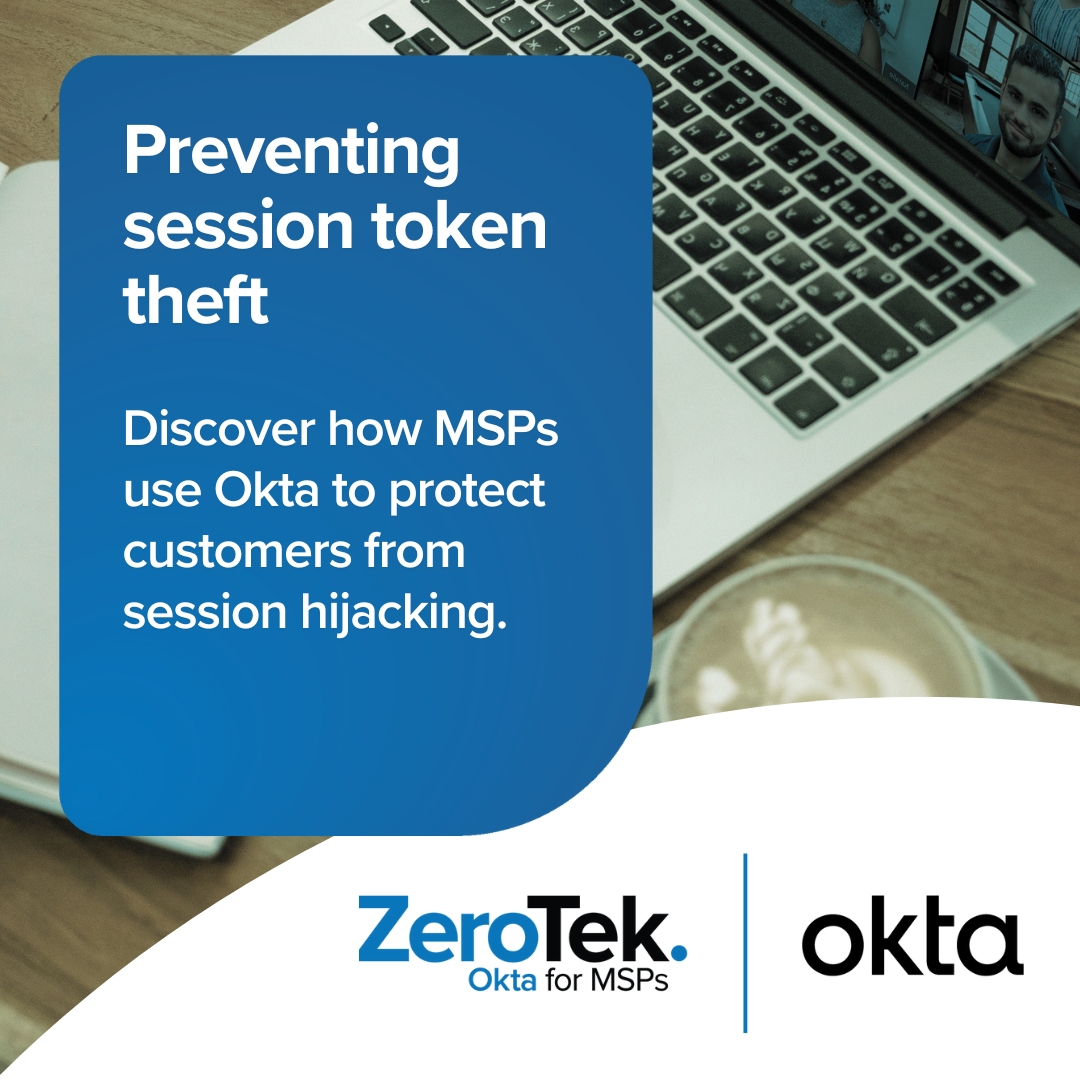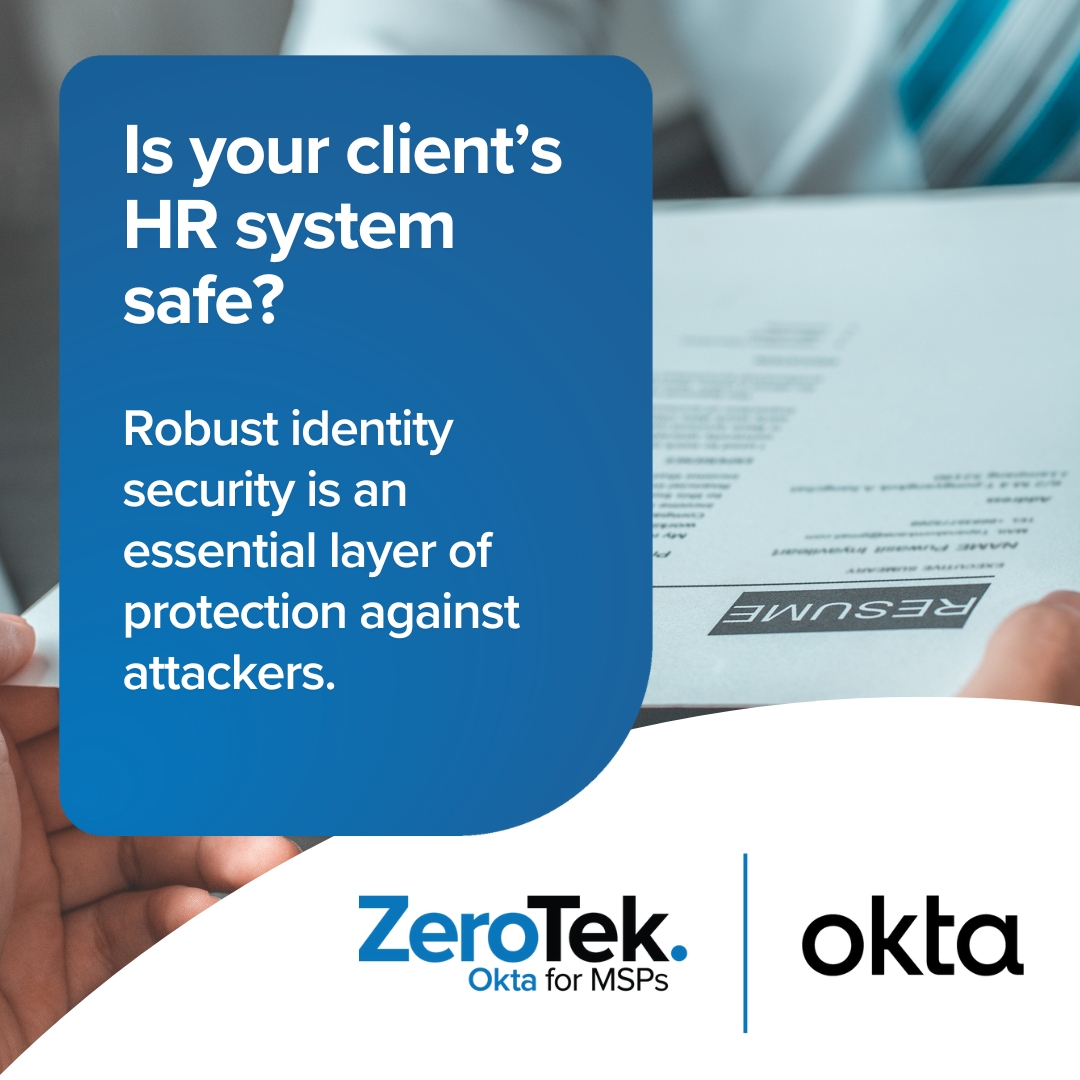Key Takeaways
- Cyberattacks now target the identity, not just the credentials.
- Password managers do provide benefits, but they do not eliminate password-based risks completely.
- Password managers are useful tools in the context of a broader identity and access management (IAM) strategy.
Sections
- Password managers vs. Identity and Access Management (IAM)
- What does “passwordless” mean, anyway?
- What are password managers good for?
- The limitations of password managers
- Why choose Okta for passwordless IAM?
- ZeroTek: empowering MSPs with passwordless solutions
- Do you still need a password manager with Okta?
- Go passwordless with ZeroTek | Okta
Sections
- Password managers vs. Identity and Access Management (IAM)
- What does “passwordless” mean, anyway?
- What are password managers good for?
- The limitations of password managers
- Why choose Okta for passwordless IAM?
- ZeroTek: empowering MSPs with passwordless solutions
- Do you still need a password manager with Okta?
- Go passwordless with ZeroTek | Okta
Key Takeaways
- Cyberattacks now target the identity, not just the credentials.
- Password managers do provide benefits, but they do not eliminate password-based risks completely.
- Password managers are useful tools in the context of a broader identity and access management (IAM) strategy.
Password managers vs. Identity and Access Management (IAM) for MSPs
As an MSP, when customers ask for relief from managing too many passwords, you need a solution that delivers a user-friendly experience without sacrificing security or frustrating customers. But which solution is better: password managers or Identity and Access Management (IAM) platforms? While both aim to secure access and promise an essentially passwordless experience, these solutions differ significantly in scope, functionality, and effectiveness. Make the right choice to strengthen your MSP security posture and protect your customers.
What does “passwordless” mean, anyway?
Passwords are problematic. Most people have too many, struggle to manage them, and don’t follow password best practices, even if they know what they are. Passwords can be guessed, phished, or cracked through brute-force attacks.
Passwordless authentication is a security approach that eliminates passwords by replacing them with stronger authentication methods, such as:
- Biometric authentication (e.g., fingerprint scans, facial recognition)
- Possession-based authentication (e.g., security keys like YubiKey, mobile authenticator apps)
- FIDO2/WebAuthn authentication (e.g., hardware security keys or platform authenticators built into devices)
- Device-based authentication (e.g., leveraging a trusted device’s cryptographic credentials)
A passwordless authentication strategy improves your MSP security posture and enhances the user experience by significantly reducing login friction.
What are password managers good for?
Password managers have become popular because most address basic identity and access needs:
- Generate complex passwords: Make it easier to create and manage strong, unique credentials, reducing weak passwords and password reuse.
- Encrypt stored passwords: Secure passwords behind a single master password.
These tools reduce user errors, like reusing passwords or choosing ones that are easy to guess. (Surprisingly, poor password habits are not just problems of the past. A 2024 Forbes report on American password habits notes that 52% of individuals surveyed use the same password for three or more accounts.)
For MSPs, password managers are easy to standardize and deploy across customers in your service packages.
The limitations of password managers
While password managers are an improvement over weak password practices, they have intrinsic vulnerabilities:
- They still rely on passwords (which are inherently vulnerable). Cybercriminals make it their business to exploit human error and attack weak passwords. While password managers can autogenerate strong passwords, there’s no guarantee that everyone will use them.
- Vendor breaches: Even password managers aren’t immune. In 2022, several high-profile breaches impacted popular solutions, exposing sensitive credentials.
You can mitigate these vulnerabilities to some extent. For example, you should choose a password manager with strong encryption, use the strong, unique passwords it generates for you, and, whenever possible, configure the tool to require phishing-resistant MFA authenticators.
Password managers do provide benefits, but they do not eliminate password-based risks completely, especially when compared to an IAM strategy that incorporates additional measures like threat detection, contextual security, and zero trust. The threat landscape has moved beyond the need for stronger or encrypted passwords.
Cyberattacks now target the identity, not just the credentials. Consider, for example, the following types of attacks that are successful when users are tricked into revealing sensitive information beyond just passwords:
- Social engineering attacks (phishing)
- Malware-based attacks that steal credentials directly from memory
- Zero-day exploits
- Deepfakes used for impersonation
- Supply chain attacks targeting software vulnerabilities
- Sophisticated AI-powered attacks that can bypass traditional security measures
Why choose Okta for passwordless IAM?
As a global industry leader in enterprise IAM technology that top brands trust to secure their user identities and resources, Okta has become essential to any comprehensive security strategy. Okta’s IAM meets modern cybersecurity challenges in ways password managers simply cannot—and MSPs can deploy and manage Okta easily with ZeroTek. (Learn more about how Okta stacks up using our IAM evaluation checklist for MSPs or how ZeroTek | Okta compares to Microsoft Entra ID as an IAM solution for MSPs.)
Okta offers several ways to go passwordless, including FIDO2 WebAuthn for biometric logins on supported devices, device-based authentication (e.g. YubiKey), and push notifications to a user’s trusted device. To deliver an even more streamlined and secure experience, you can also use Okta FastPass, which combines authentication through biometrics or device PIN with device trust and zero trust strategies that further strengthen your MSP security posture.
With Okta, users can stop creating and using passwords and instead:
- Authenticate using strong biometric or possession-based authenticators.
- Access all their apps and resources through SSO for secure, frictionless logins.
- Protect themselves from cyberattacks with Okta ThreatInsight, which aggregates Okta customer base data globally to detect and block malicious behaviors.
- Secure further protection through whatever zero trust, device trust, or advanced XDR strategies they implement leveraging built-in Okta features, or through platform integrations like CrowdStrike.
But is Okta easy to implement for your MSP customers—or to standardize across your customer base? Yes, through ZeroTek.
ZeroTek: empowering MSPs with passwordless solutions
At ZeroTek, we empower MSPs to successfully deliver and manage top-tier identity management services through Okta’s enterprise-class solution. Our SaaS platform simplifies deploying, scaling, and managing Okta for businesses of all sizes.
What we offer MSPs:
- MSP-friendly Okta licensing and MSP-centric technical support
- A centralized dashboard to manage identity services across customers
- Expert guidance from Okta Certified Consultants
- Best practices for securing environments that still require passwords (e.g., on-premises AD and RADIUS integrations)
- Free onboarding that sees you deploy to your first customer in as little as two weeks, instead of enterprise-standard timelines that are often measured in months.
Do you still need a password manager with Okta?
With Okta, password managers become redundant for most of your customers because Okta’s SSO and MFA protocols eliminate most use cases for passwords and enable a fully passwordless experience.
However, some MSPs choose to retain a password vault for themselves to address niche needs, such as:
- Safeguarding access codes for physical locations
- Storing time-based one-time password (TOTP) secrets and credentials for service accounts created in specific customer deployments
How can this be secure for MSPs if password managers ultimately do not offer sufficient protection against cyberattacks?
A password manager used with Okta in the context of a broader IAM strategy is far more secure than a standalone password manager. With Okta, not only can you secure access to the vault with biometric and possession-based MFA, but you can also configure geofencing security policies that block access from logins from anywhere outside designated safe locations, block access from anonymizer proxies altogether, and leverage Okta FastPass and device trust to lock down access even further.
Go passwordless with ZeroTek | Okta
For MSPs ready to enhance their security posture and embrace passwordless authentication, Okta delivered through ZeroTek is the ultimate solution. By combining ZeroTek’s platform with Okta’s advanced IAM capabilities, you can deliver Okta’s enterprise-grade security and a frictionless, passwordless user experience across your customers.
Are you ready?
Ready to explore how ZeroTek | Okta can help your MSP deliver next-level security services to your customers?





